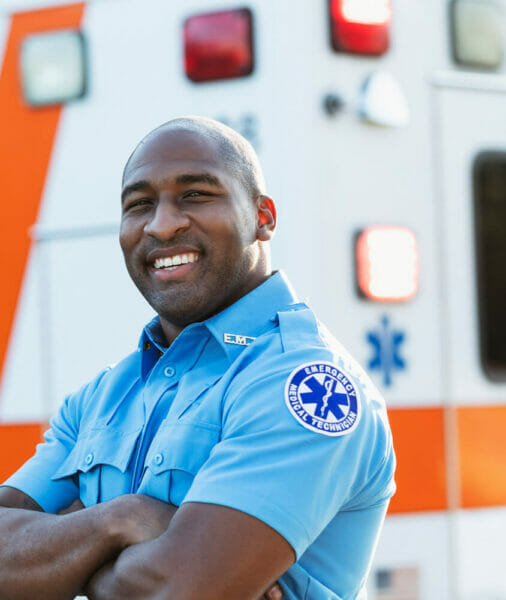First responder donor referral program
To help increase tissue donation and honor the donation decisions of more Texans, LifeGift created the First Responder Donor Referral Program. This program is the first of its kind in Texas and one of a select few programs in the country. Our goal is to provide donation opportunities to people who pass away outside of a hospital who previously may not have had the option to donate.
We’re grateful to Montgomery County Hospital District EMS, who was the first partnering agency.


our partners
Why we work with EMS agencies, fire and rescue and law enforcement
LifeGift believes that working with EMS, fire and rescue and law enforcement is effective in obtaining referrals of deaths outside of a hospital, often due to varying factors involving a medical examiner (ME) or justice of the peace (JP). LifeGift believes that every family should be offered the option of organ or tissue donation, and we appreciate the partnership with these agencies and individuals that support our ability to save lives.
In most of the counties served by LifeGift, a JP is involved in decedent care at the scene. The JP will decide whether the decedent will undergo an autopsy. If the autopsy is ordered, the decedent will go to a ME, which can cause delays and additional missed opportunities.
For LifeGift, maintaining a working relationship with EMS agencies, fire and rescue and law enforcement is ideal because of the immediate clinical information and time saved by obtaining a referral directly from a scene.
How it works
First responder donor referral protocol
Since 2001, EMS agencies, fire and rescue and law enforcement have joined the life-saving effort creating a voluntary routine referral protocol, utilizing LifeGift’s 24/7, in-house Communications Center. And while the donation opportunity means someone has died, first responders can help in restoring or enhancing life for someone awaiting a tissue transplant. This protocol is designed as a phone referral system between LifeGift and EMS agencies, fire & rescue and law enforcement for potential tissue donations from decedents who die outside of a hospital:
1. Death identified
A death on scene is identified.
- Obvious trauma incompatible with life
- Extended downtime with evidence of rigor mortis or dependent lividity
- Field termination protocol implemented
2. Family is notified
The family is advised of the death or termination of effort, if applicable.
3. Paramedic gathers information
Vital information is obtained from the scene by a paramedic.
- Location of deceased
- Next of kin or contact person’s name
- Next of kin or contact person’s phone number
- Name, age, sex and race of deceased
- Mechanism of injury
- Brief medical history, if available
- Justice of the Peace, if applicable
- Law enforcement contact, if applicable
- Funeral home of choice, if applicable
4. Paramedic contacts LifeGift
A call is initiated from the scene by a paramedic to LifeGift at 800-633-6562, reporting the following:
- Name of referring EMS, fire & rescue or law enforcement employee
- Agency name and unit/Medic number
- Station or Communications Center phone number
- All vital information requested above
5. Follow-up
LifeGift will provide follow-up information directly to the referring crew on the outcome.
- By phone within 24 hours, if applicable
- Referring individual will receive a confirmation letter within one month
Our commitment
Our 24/7 communications center
Every few minutes, 24 hours a day, 365 days a year, the phone rings at the LifeGift Communications Center in Houston. It’s immediately answered by a team of more than 20 dedicated team members who understand that each call can potentially save or enhance the lives of up to 75 individuals.
The state-of-the-art Communications Center receives and coordinates tissue and organ referrals in LifeGift’s service area, which covers more than 275 hospitals and 10 transplant centers. Because it is required by law for each hospital to report every death to LifeGift – more than 30,000 each year – the “Comm Center” maintains a fast-paced, yet focused environment.
Communication Center specialists work with tissue-exclusive donors to obtain authorization for donation over the phone. Using calm, reassuring voices, the specialists provide comfort to the potential donor’s family while explaining the great need for donated tissue. They discuss which tissues can be donated, how they help others and answer any questions. Once the family understands their options, the specialists ask for donation authorization.
This innovative approach used by the Communications Center has been a model for numerous tissue and organ recovery agencies nationwide. And thanks in part to the skill of the Center’s team members, LifeGift Tissue Recovery Services recovers close to 1,500 donations of bone, skin, heart valves, saphenous veins and femoral veins each year – improving the lives of potentially thousands of cancer patients, burn victims, children born with congenital defects and others.
